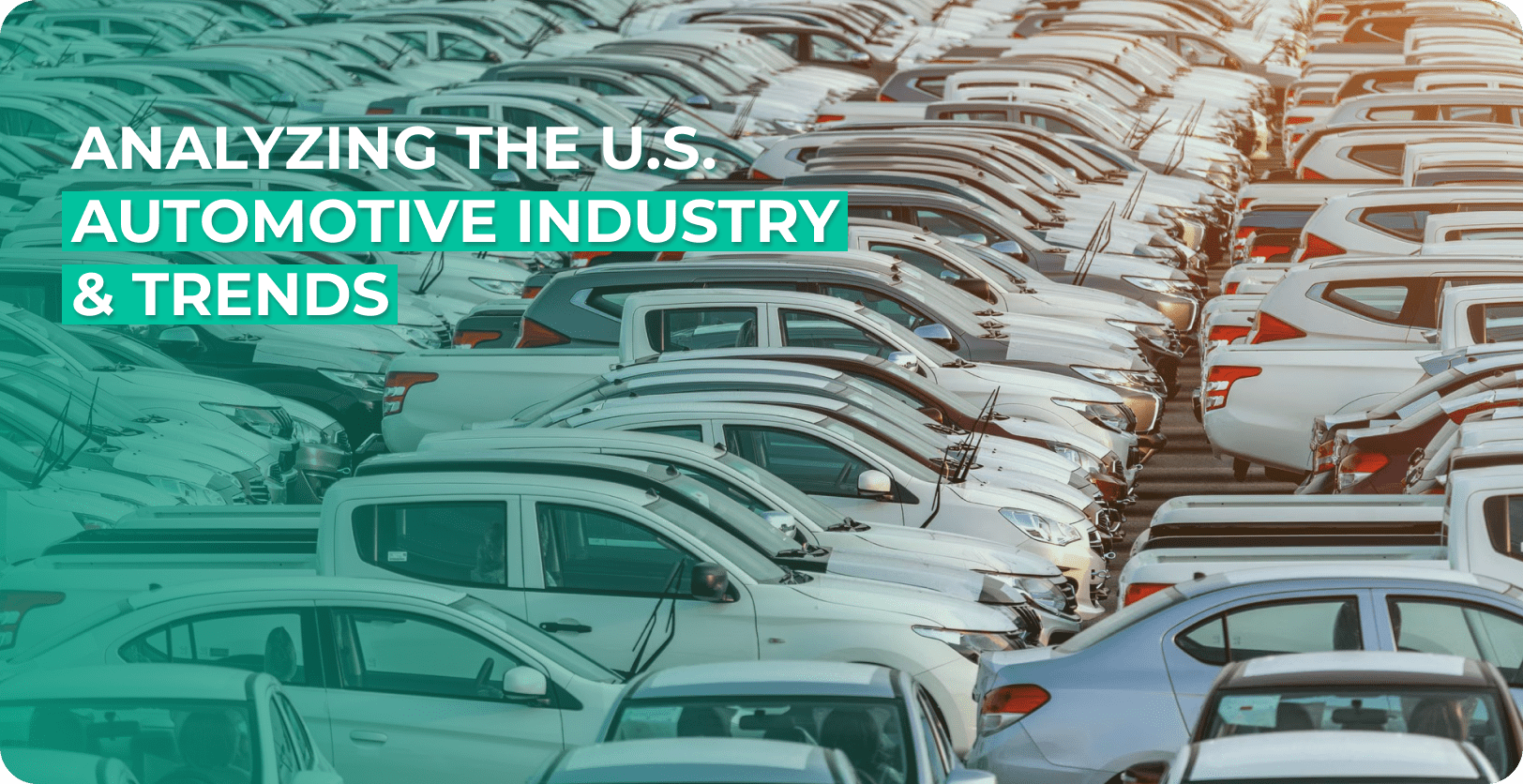The automotive industry is a dynamic landscape, constantly evolving with technological advancements, consumer preferences, and global economic shifts. For auto repair shop owners, staying ahead of industry trends and statistics is important for strategic planning and business success.
In this comprehensive analysis, we dive into key aspects of the U.S. automotive industry analysis, providing insights and trends that shop owners should know.
What is the Automotive Industry?
The automotive industry is filled with all sorts of businesses working on cars. From design and development to manufacturing and marketing. And it doesn’t stop here. It also includes the selling, repairing and modifications of motor vehicles. There’s a whole lot happening in this world.
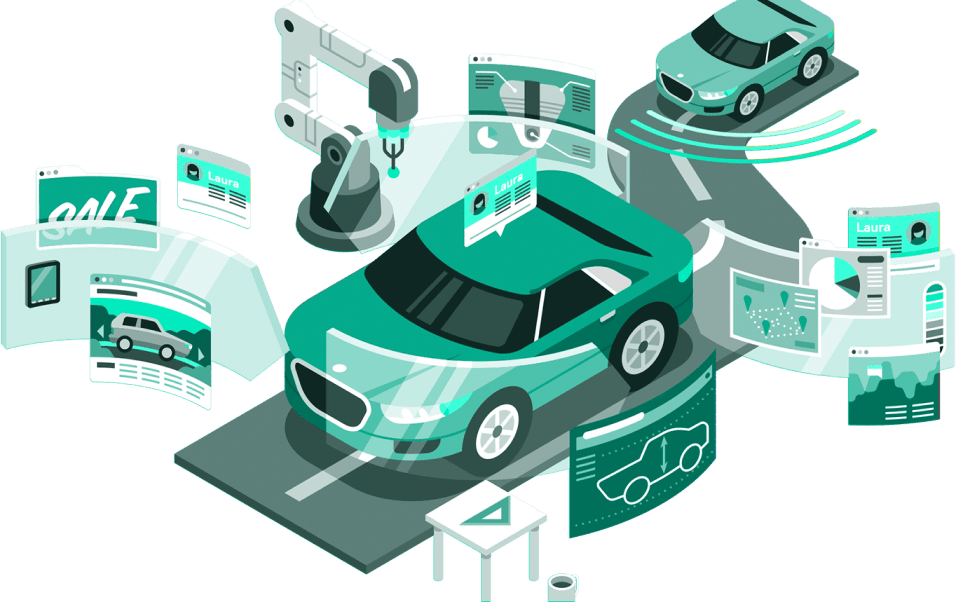

You see, the term “automotive” is a fancy way of saying anything to do with self-powered vehicles. It’s a mix of Greek and Latin words – autos meaning “self” and motivus meaning “of motion.” This term got its start back in 1898 to describe the automobiles, thanks to Elmer Sperry.
Now, we have big factories producing shiny new cars, dealerships busy with buyers and repair shops fixing up those rides. That’s the automotive industry market in a nutshell – a giant ecosystem where cars are born, sold, and kept running smoothly.
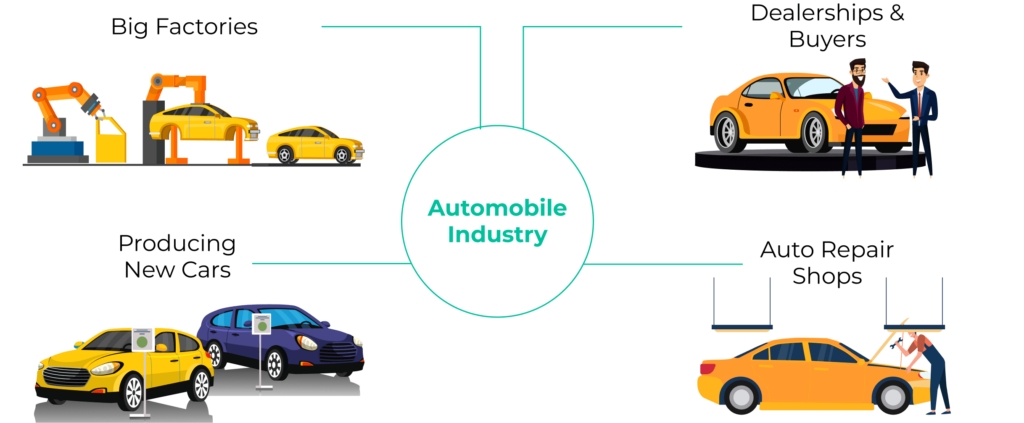
The Birth of Automotive Industry
Let’s take a trip back in time! It all started with horse-drawn carriages. Then, in 1769, Nicolas-Joseph Cugnot built a steam-powered car. Fast-forward to 1886, and Karl Benz invented the first gas-powered car. The real game-changer? Ford’s affordable Model T in 1908.

So, the next time you hop in your car, take a moment to appreciate the journey it took to get there. From horse-drawn carriages to self-powered wonders. It’s a wild ride through history; we’re all along for the adventure.
Snapshot of Global Automotive Industry
Is this automotive industry growing? Well, the automotive industry is an ever-evolving sector, with new technologies and trends emerging daily. So, it’s crucial to stay updated with the latest automotive industry statistics.

Globally, automotive industry is expected to reach a revenue of $4.6 trillion by 2025, with electric vehicles accounting for 32% of new car sales by 2030.

The global automotive industry employed around 9.9 million people in 2020, with China having the highest number of employees at 4 million.
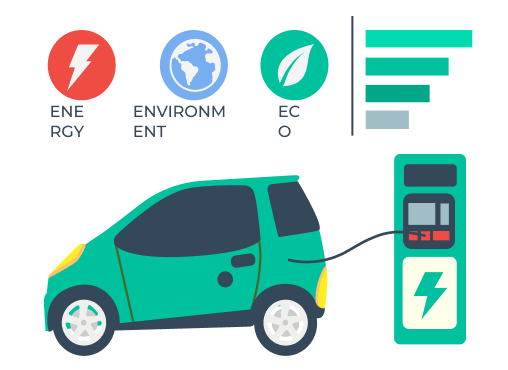
The global electric vehicle market is projected to reach a market volume of $600 billion by 2025, with China leading the market with over 50% of global EV sales.
Overview of the U.S. Automotive Industry
The U.S. automotive industry plays a crucial role in the nation’s economy, contributing significantly to employment and economic growth. Let’s take a peek at some automotive numbers, courtesy of Zippia, to give us a snapshot of what’s going on in the U.S. automotive industry market.

Let’s break down some more stats about cars in the U.S. and around the globe. Get ready for some automobile industry analysis in numbers!

Evolution in the US Automotive Manufacturing Landscape
Let’s talk about the big players in the U.S. car world.

American car brands like Ford, General Motors, and Chrysler ruled the roads. They were all founded and based right here in the U.S., making it easy for people to get their hands on American-made cars. Sure, there were a few imports, but they were pretty rare, and getting parts and service for them was a hassle.

But things started to change. More foreign carmakers started setting up shop in the U.S., and more people started buying their cars. Plus, events like the fuel shortages in the ’70s pushed people to look for smaller, more fuel-efficient cars, which weren’t exactly the specialty of American car companies at the time.

Let’s not forget about the tech revolution. With climate change becoming a big concern, electric cars started to gain more attention. Tesla, led by Elon Musk, jumped into the game with its fully electric cars, shaking up the industry.

Then came the global competition. American carmakers had to rethink their game plan to stay in the race. Some even needed help from the U.S. government to stay afloat. General Motors had to say goodbye to some of its brands, like Pontiac and Saturn, while Chrysler went through a series of owners, ending up with Fiat.
Today, the U.S. car market is a mix of old and new. One could characterize these by grouping them into three categories:
The OG’s

Legacy American brands that are still based here in the U.S. and sell their cars all over the world. Think big names like General Motors and Ford.
The New Players

Emerging U.S. companies that have become major players in the car game. That’s where Tesla comes in – they’re shaking things up with their electric cars.
The Global Players

Foreign car companies have significantly impacted the U.S. market despite being headquartered abroad, with notable brands such as, Toyota, and Hyundai.
Challenges Faced by the Automotive Industry
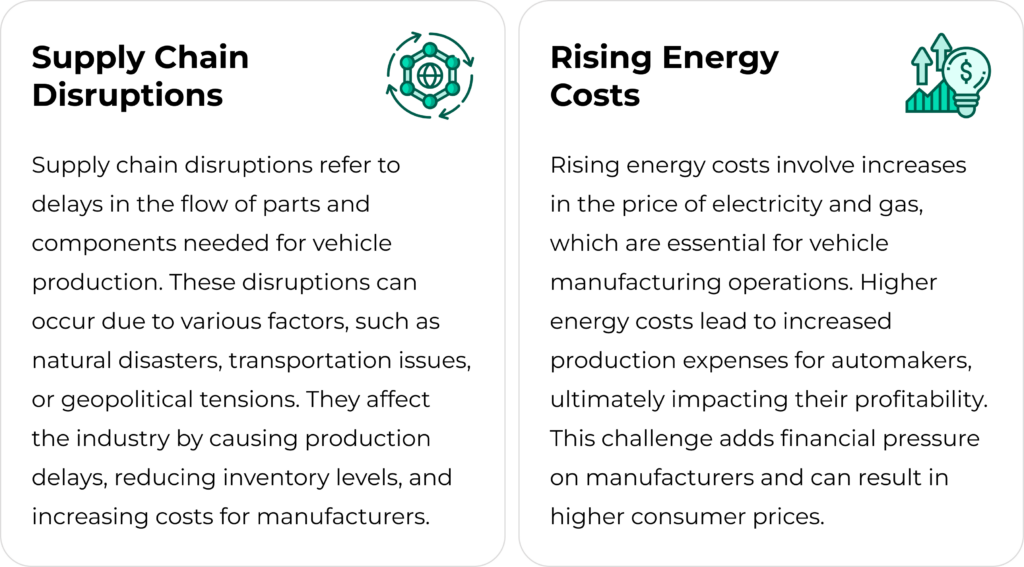

Evolving Trends in the Automotive Industry
While trends like EVs, connected cars, and automation are transforming the vehicles themselves, technology is also changing how auto repair shops interact with customers. For example, phone management has become a critical part of winning business in a competitive market. With tools like AutoLeap’s AIR (AI Receptionist), shops can make sure every call is answered 24/7, even after hours or during peak times, helping capture opportunities that might otherwise slip away.
1. Shift Towards Electric Vehicles
Electric and hybrid vehicles are not just the future; they’re becoming a part of our everyday life.
According to S&P Global Mobility, around 1.9 million electric vehicles are currently on U.S. roads. This figure is projected to skyrocket to 28.3 million by 2030. The infrastructure to support this is growing too, with about 140,000 charging stations nationwide.

Right now, there are only about 74,941 public EV charging stations across the US and Canada.
According to the International Energy Agency, in 2020, more than 3 million electric vehicles were sold worldwide, making up over 4% of all car sales. By 2023, this number jumped to an estimated 14 million.
More people are buying electric vehicles because they want to save on gas and reduce pollution. Companies like Tesla are leading the way, and even traditional car makers focus more on electric models. Additionally, Chevrolet, Hyundai, Kia, Nissan, and Jaguar have all released more affordable electric vehicles that range anywhere from 200 miles to 250 miles. This is also pushed by government rules that want more eco-friendly cars on the road.
No Data Found
What Does This Mean for Auto Shops?

If you run an auto shop, you’ll see more EVs come in for service. Working on EVs often involves electrical systems and batteries rather than traditional engines and oil changes.
You might need to invest in new equipment and training for your team so you can handle these high-tech cars.
2. Ride-Sharing Popularity
Ride-sharing apps like Uber and Lyft have changed how we think about car ownership. Many people in metropolitan cities (where parking can be a nightmare) now opt to use these services instead of owning a car. These services have altered urban mobility by providing a convenient alternative to owning a car.
What Does This Mean for Auto Shops?
This trend could mean a shift in your customer base from individual car owners to businesses that run a number of vehicles. These cars are on the road much more often and need regular, quick maintenance to keep running. Shops might need to adapt to handling more vehicles and potentially offer quicker or on-demand repair services.

3. Ride-Sharing Popularity
Cars that can drive themselves are no longer just in sci-fi movies. Today, many cars have some self-driving features, and fully self-driving cars are on the way.
The autonomous vehicle (AV) sector is still in the early stages, with only about 1,400 self-driving cars currently on U.S. roads. However, predictions suggest this could increase to 33 million by 2040.
No Data Found
Searches for “autonomous driving” have increased by over 1,029% over the past 10 years.
The Society of Automotive Engineers (SAE) has a system to describe how automated vehicles can be. It goes from Level 0, which means no automation at all, to Level 5, which is completely automated, where the car does everything independently.
Major car companies like Tesla, Alphabet, Ford, GM, and Volvo are all getting into the self-driving car game.

Currently, there are over 30 million vehicles at Level 1 automation on the roads. By 2024, this will jump to 54.2 million.

By 2024, more than half of all vehicles will have some form of automation, varying from Level 1 to Level 5.

The market for autonomous vehicles is valued at over $207 billion. It's expected to continue to increase in the next 4-6 years.
What Does This Mean for Auto Shops?
Auto shops must keep up with technology, including software updates, sensor repairs, and other tech-focused services. Training your staff to understand and fix these technical systems will be crucial.

4. Connected Cars
Modern cars are equipped with technology connecting them to the internet, allowing for navigation updates, streaming music, and more. This tech is rapidly advancing, making cars part of a larger connected ecosystem.
Around 47.5 million connected cars hit the market in 2020, and experts predicted a 20% increase in 2021.
No Data Found
Searches for “connected car” have risen by 96% over the last decade.
No Data Found
Size of the Global Connected Car Market between 2019 and 2028.
The global market for connected cars is currently valued at about $103.24 billion. By 2028, it’s forecasted to rise to $191.83 billion.
What Does This Mean for Auto Shops?
Repair shops will need to handle software issues just as much as mechanical ones. You might find yourself updating software, fixing connectivity issues, or repairing hardware like touchscreens.
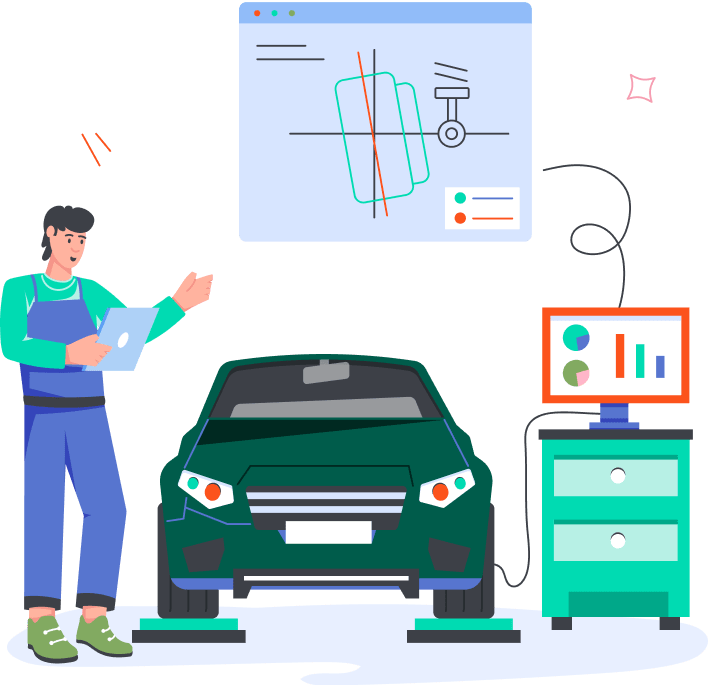
5. Preference for SUVs and Trucks
In the U.S., there’s a big trend towards larger vehicles like SUVs and trucks. These vehicles are popular for their space, comfort, and power and dominate the sales charts. In 2021, SUVs made up 46% of new vehicle sales in the US, a jump from 38% in 2016.
Several factors have fueled the rise of the SUV market.
One factor is the increasing cost of fuel. With fuel prices increasing, people are more interested in vehicles offering better gas mileage. While SUVs typically have lower gas mileage than regular cars, they’re also spacious and more versatile.

Another reason for SUV popularity is the growing popularity of active lifestyles. Many people now seek vehicles that can handle outdoor adventures like camping, hiking, and biking. SUVs are better suited for these activities compared to regular cars.
What Does This Mean for Auto Shops?
More SUVs and trucks mean changing up your services. Bigger cars often need different types of maintenance, like tougher brakes or stronger suspension work.
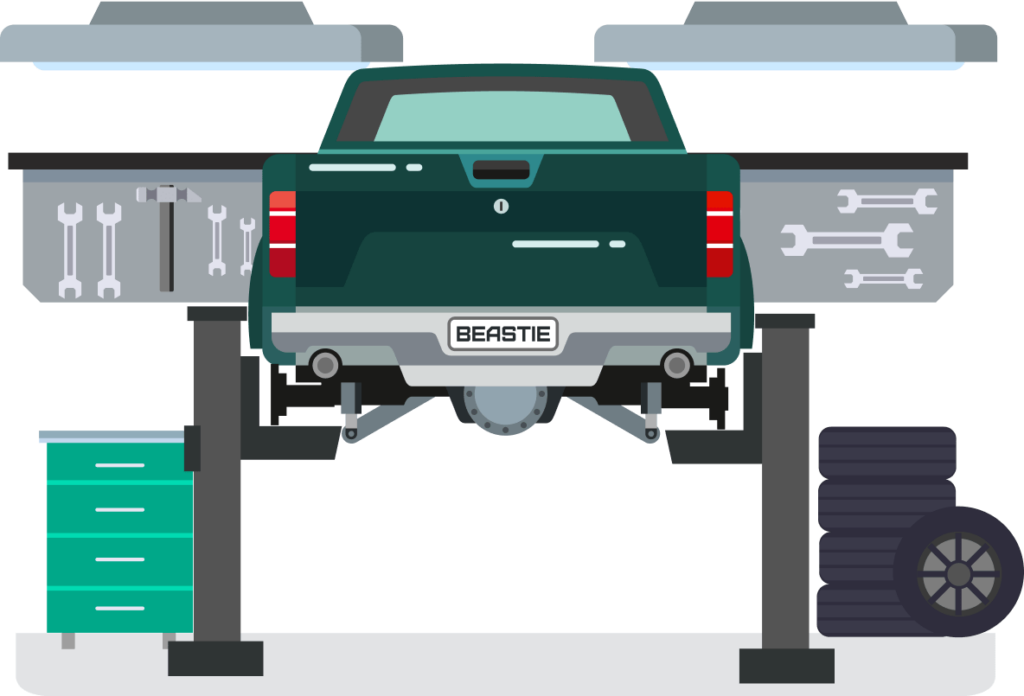
6. Buying Cars Online Is Becoming Popular
More people are buying cars online now. It’s convenient, and you can choose from many options from home. Over 90% of car purchasers perform online research before a transaction.

Before the pandemic, only about 4.2% of all car sales occurred online. However, in 2020, with dealerships shifting to digital platforms, this number likely went up.
It’s no surprise, considering that 83% of car buyers have expressed a desire to save time by shopping online
Additionally, in 2019, a whopping 80% of buyers used third-party websites to help them buy a car. These online car retail services are making buying cars much more efficient.
What Does This Mean for Auto Shops?
Shops might need to boost their online presence like making it easy to book appointments online. Working with online car sellers could also bring in new business, handling the service after people buy their cars.

7. Hydrogen May Be The Fuel Of The Future
Alongside electric vehicles powered by batteries, fuel-cell electric vehicles (FCEVs) are another option gaining attention.
FCEVs work differently from regular electric cars. Instead of relying on batteries, they use a fuel-cell stack that combines hydrogen and oxygen to produce electricity, emitting only water as a byproduct – no harmful CO2 emissions.
One big advantage of FCEVs is how quick and easy it is to refuel them. It’s like filling up a gas tank, taking about five minutes. Plus, they can travel a similar distance as gasoline-powered cars, around 300-400 miles on one tank.
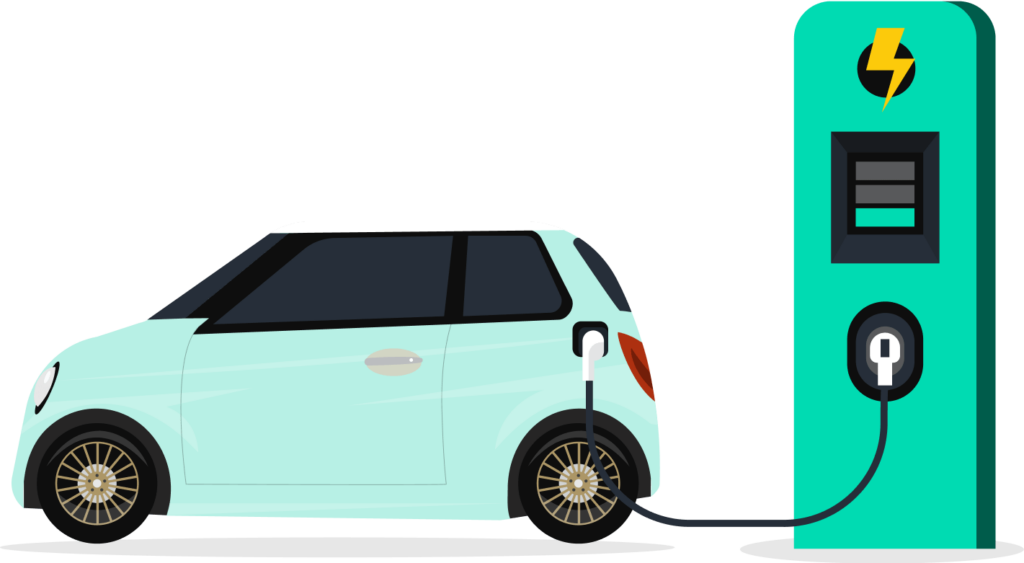
No Data Found
The search volume for “hydrogen fuel” is growing.
- The market for FCEVs is expected to grow at a remarkable CAGR of nearly 70%, through 2026.
- FCEV sales are on the rise despite not being as popular as battery-powered electric cars yet. In 2021, 16,000 FCEVs were sold, a significant 90% increase from the previous year.
- One major challenge hindering the widespread adoption of FCEVs is the lack of hydrogen refueling stations. Currently, there are only 54 such stations in the U.S., with the majority located in California. However, California plans to open 1,000 hydrogen refueling stations by 2030.
- Toyota’s Mirai and Hyundai’s Nexo have led the FCEV market since their launch in 2016.
What Does This Mean for Auto Shops?
As FCEVs become more common, auto repair shops may need to invest in specialized training and equipment to handle repairs and maintenance specific to these vehicles. Additionally, the growing popularity of FCEVs could impact the types of services and parts that auto repair shops offer.
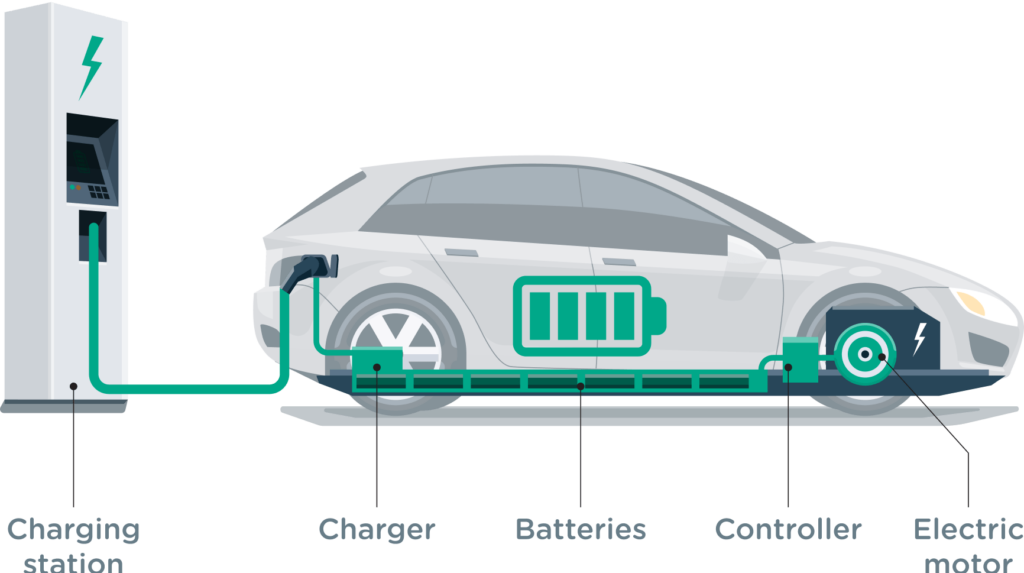
SWOT Analysis of the Automotive Industry


PESTLE Analysis of Automotive Industry

Political Factors
Political decisions in a country can directly affect businesses, including the automotive industry. Here's how:

Economic Factors
A country's economy affects people's lifestyles and, in turn, the automotive industry. Here’s how:

Social Factors
Social trends influence car production. Here's how:

Technological Factors
Technology is crucial for car companies. Here's how it affects them:

Legal Factors
Laws and regulations can impact the car industry. Here's how:

Environmental Factors
Environmental concerns can affect the car industry. Here's how:
Closing Thoughts
Wrapping up our dive into the U.S. automotive industry and the trends shop owners should watch, it’s clear that staying in the know is super important. From dealing with challenges like inflation and economic downturns to seizing opportunities like new tech and changing consumer tastes, the auto world is always changing. If you’re running a shop, being ready to adapt and learning as you go is key. Stay flexible, keep your customers happy, and use technology effectively. By doing that, you’ll be ready to roll with whatever the future brings in the U.S. auto scene!



